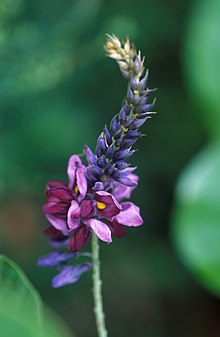Kuzu, otherwise known as Japanese wild arrowroot is believed to be a miracle food as it has medicinal properties when taken as a drink for the digestive system, as well as being a good thickening ingredient in cooking. Therefore, the Japanese respect and value this wild plant. It is a natural product obtained from the root of a Japanese wild plant which takes a considerable period of time to prepare. The roots are crushed, thoroughly washed to remove any impurities then subjected to a natural drying process. The resultant starch possesses an exceptional jelling powder which provides a perfect smooth texture with a subtle flavor.
Kuzu is an extremely versatile organic product. It is ideal for sauces, gravies and soups providing a smooth consistency and, at the same time, a translucent professional finish which very few other thickening products can offer. Furthermore, because it can counteract the acidity in sweets, it is perfect for desserts as well as being ideal for pie fillings, toppings and icings. It is equally effective when used as a coating for deep friend foods such as fish, chicken or vegetables having an extremely light texture and crisp finish.
Probably one of the most beneficial properties the Japanese wild arrowroot has is the unique flavor which complements any foods and does not leave any lingering starchiness in taste or smell.
This product should be stored in a sealed jar when not in use. For using in sauces and gravies, the ratio for using it is one and a half tablespoons of kuzu per cup of liquid. However, for most dishes the powder needs to be entirely dissolved in a small amount of cold water. This is then combined with the other ingredients, towards the end of the overall cooking time; then when simmering, constant stirring is necessary to enable thickening to the required texture.
Although kuzu is known as Japanese wild arrowroot it should not be confused with the more common arrowroot as it is far more superior to this in every way whether comparing taste, texture and jelling ability.
